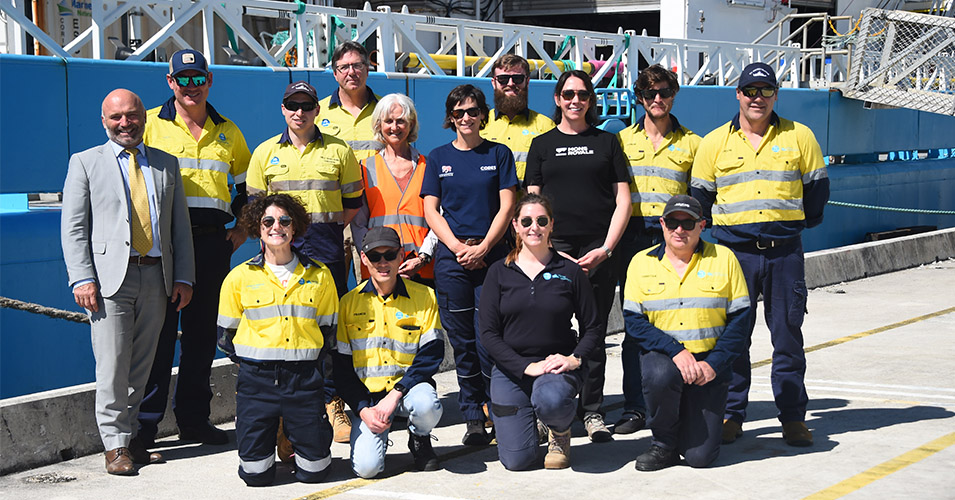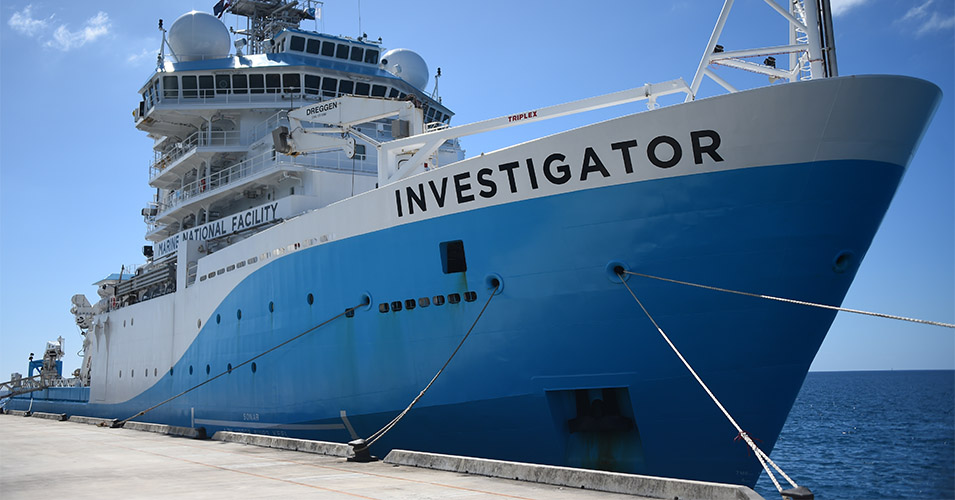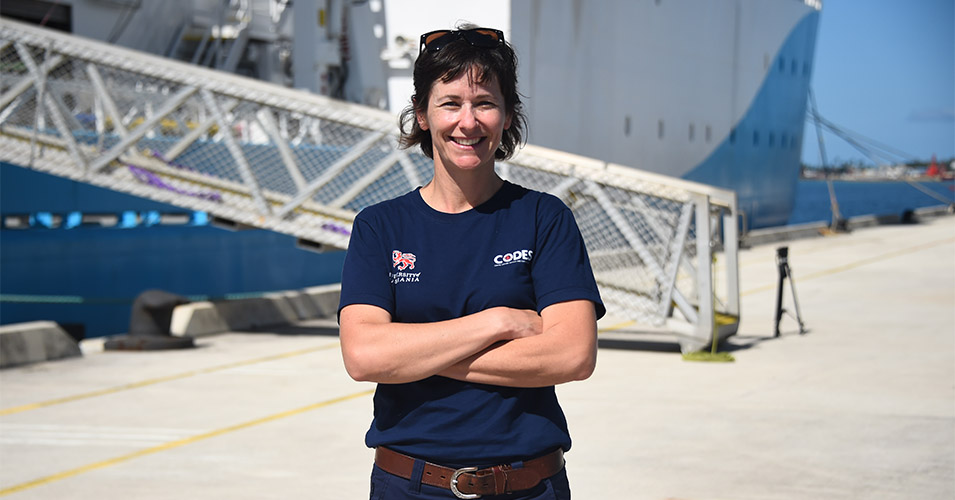
Photos by Tupou Vaipulu Jr
Updated 19 August 2025
An ocean research team from Australia led by Chief Scientist Associate, Professor Rebecca Carey, arrived in Tonga on 19 August on the research vessel, RV Investigator, to conduct a 54-day study of the eruption, aftermath and ecosystem recovery following the 2022 eruption of the Hunga-Tonga Hunga-Ha'apai (HTHH) volcano.
The voyage is being led by the University of Tasmania (UTAS) and will see an international team of 40 researchers – including from the Tonga Geological Services – conduct more than 120 scientific operations in and around the Hunga Volcano.
Researchers will survey and map the volcano, which rises 2000 metres from the surrounding seafloor. They will study the volcano and seafloor structure, assess the aftermath of the eruption, and investigate how marine life and seafloor communities have recovered in the area since 2022.
Scientific operations will include seafloor mapping, surveys of the sub-seafloor structure, sediment coring with giant piston corer (able to recover 24m cores), deep towed camera surveys and benthic sled sampling to survey marine life, and CTD (conductivity, temperature and depth) instrument casted to study ocean properties.

Scientists will also be searching for volcanic plumes, a sign of volcanic activity beneath the seafloor.
The research will generate knowledge to help Pacific Island nations better manage risk from natural disasters, to help protect fisheries and food security, prevent damage to critical sub-sea infrastructure such as communication cables, and safeguard island communities from volcano-generated tsunamis.
The 15 January 2022 eruption of Tonga’s Hunga-Tonga Hunga-Ha'apai Volcano was the most powerful volcanic eruption on the planet in the last 110 years.
Its eruption column height of 58 km lacks modern precedent, as did its globe-crossing shockwave. An 850 m crater (depression) formed at the summit, a volcanogenic (originating from a volcano) tsunami crossed the Pacific Ocean, and the seafloor in the area was dramatically altered.
RV Investigator is a floating laboratory that can deliver a diverse range of research including atmospheric, biological, geophysical and oceanographic science. The ship is 94 metres long, 10 storeys high, and can accommodate 60 scientists and crew on voyages from the Antarctic ice edge to the equator. This is the first time that RV Investigator has visited Tonga.
RV Investigator is part of Australia’s Marine National Facility, national research infrastructure funded by the Australian Government and operated by CSIRO, Australia’s national science agency.
The team will also be dredging the seafloor to collect rocks which according to Dr. Carey, after close study they will be able to determine how the volcano erupted. A challenge is getting close to the islands near the underwater volcano without putting the vessel at risk.




